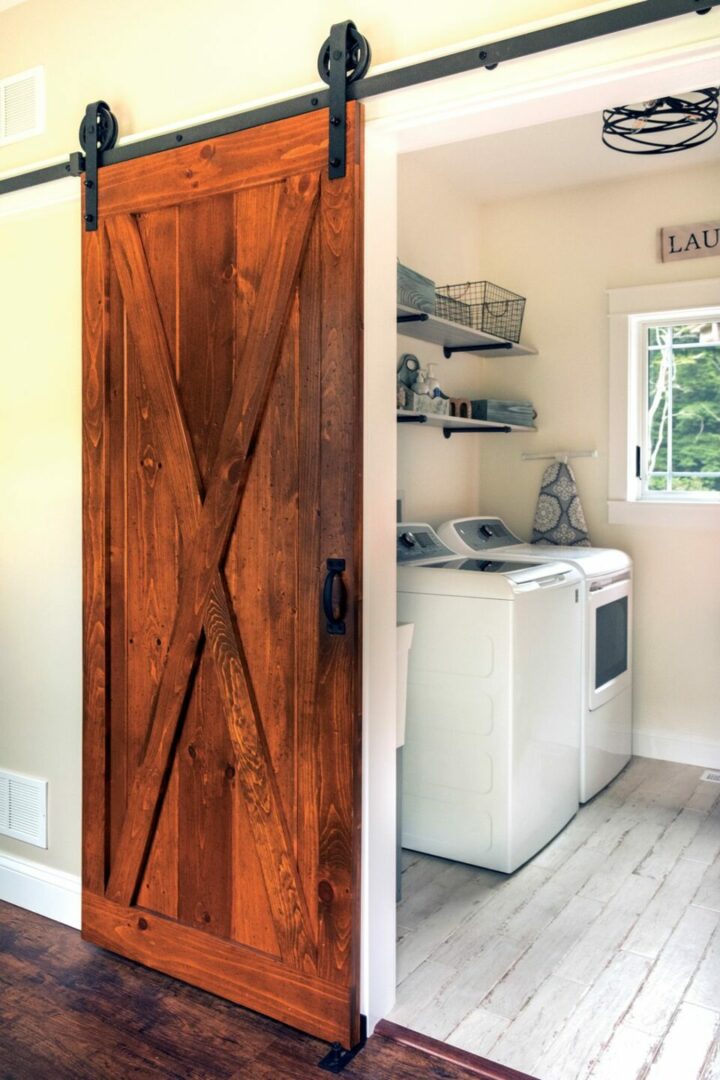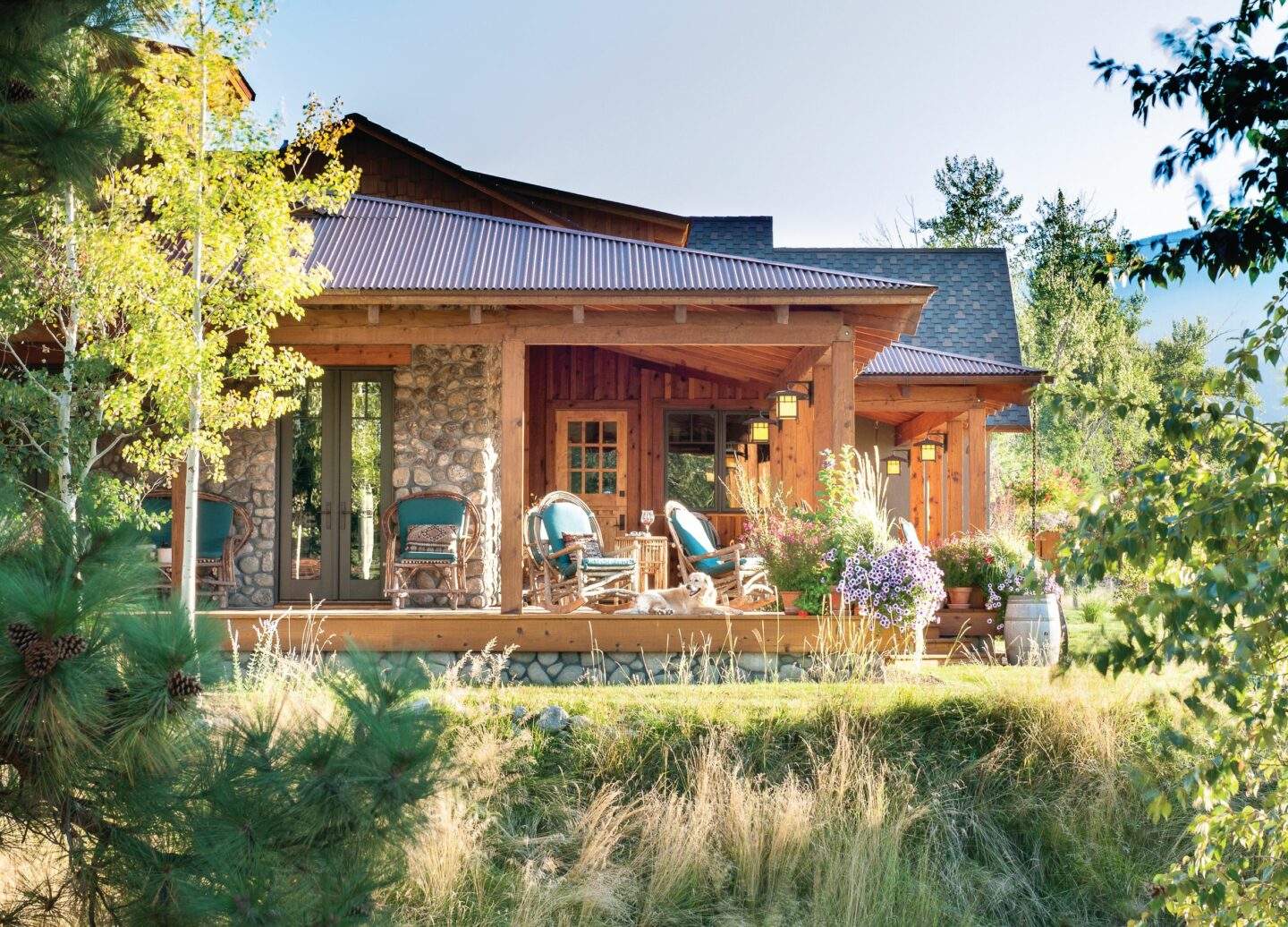Best Strategies to Make the Most of Your New Floor Plan
Plenty of joy comes standard when making your dream home a reality. But it’s normal to have some anxieties as well. You don’t want a new floor plan that’s less than perfect. That’s why we contacted log and timber frame home professionals for advice. Keep these tips in mind when you’re designing your dream home.
Get Advice on Land
Before even diving into the design phase, have your construction team advise you on your land purchase, says Matt Franklin, lead Architect at PrecisionCraft Log & Timber Homes (Meridian, Idaho), with 25 years design experience. This team can include the designer, builder, real estate agent, and a soil engineering firm to assess any parcel under consideration. They can also help determine where well and septic systems can be placed. All this can be done under a contingency agreement, to allow time to make the right decision.
“Clients will come to us with a parcel ‘that they got a really good deal on.’ Only to discover that the parcel has changed hands multiple times because it was too expensive to build on,” Franklin says. “Too steep of a slope, expansive soils, or bedrock that would need blasting can quickly become budget breakers,” he says.
Devote Time to the Design Phase
Devote a year or more to designing your dream home to ensure you get it right. “Stock plans are fantastic visual tools, but typically homeowners want to implement modifications,” says Bobbie Landis, marketing director at Timberhaven Log & Timber Homes (Middleburg, Pennsylvania). “Look for a company who is willing to work with you to achieve that perfect design. Timberhaven provides free custom design consultations. Whether this entails a few tweaks to a standard plan or designing a completely customized home, we will work with you until your new home design exceeds your expectations.”
Select a Floor Plan That Will Work Long Term
When perusing floor plans, look for those that will still work for you 30 years or more in the future, says Allen Halcomb, president of MossCreek (Knoxville, Tennessee), which has been designing log and timber frame homes for 35 years.
While we all hope to remain physically robust, one should plan for all eventualities in the design of the home. “These don’t have to be expensive amenities, but they will ultimately save you money in the future, because you won’t have to remodel,” Halcomb says.
Embracing universal design principles will ensure the home will meet the abilities of people of all ages and mobility, for decades to come. Increased lighting, wider doors and hallways to accommodate wheelchairs, eliminating tripping hazards, and making the home easy to navigate and use with a minimum amount of effort, are some of the goals of universal design.
“The goal is to make spaces flexible and accommodate a wide range of individual preferences and abilities,” Halcomb says.
Because we begin and end our days in our kitchens and baths, many universally design products are being specified for these task-oriented spaces. Curb-less showers, cabinetry that opens outward to make interiors more accessible, touchless plumbing fixtures, and microwave drawers (instead of above the stove) are increasingly popular. If your new home will be two or more floors, consider adding a modest two-person elevator.
Accommodate Multigenerational Living
“Multigeneration housing is an old concept that is making a comeback,” says Diana Allen, architect and director of design at Woodhouse: The Timber Frame Company (Mansfield, Pennsylvania). “We are seeing more and more homebuyers seeking to accommodate multiple generations in their new homes.”
“We get quite a lot of requests for a second primary bedroom on the ground floor to accommodate either both or one parent that will eventually need care,” Allen says. “A ranch home lends itself perfectly for this and I like to separate the two bedrooms with the common spaces in the center. This allows each to seek solitude or private time with small sitting rooms in each bedroom but share the common spaces.”
Have a Home Office
“I don’t believe life will ever truly return to the old ways where we all go out of the home to offices,” Allen says. “I believe the home offices are here to stay and if we can make it work for multiple functions then all the better. This is why murphy beds have also made a comeback and this is a great way to combine the office and en suite. These rooms can function as gyms or yoga rooms when not needed as bedrooms.”
“The extra primary bedroom can function as a home office when not needed for elderly parents or millennials. This works the best when it’s only one parent that moves in as the room can be smaller while still functional as an en suite,” Allen says.
Locate the Laundry on the Main Level
When it comes to planning for our future selves, “Main-level bedrooms and laundry features are must-haves,” says Landis at Timberhaven. “Also, think about accommodating overnight guests like your future grandchildren, and convenient access to the kitchen from a main entrance for easement when unloading groceries.”

Make Every Square Foot Count
If your budget can afford it, opt for 10-foot sidewalls for your basement, to add volume to what otherwise can be a closed-in space. “If you need to increase living space but are hoping to maintain a modest footprint, consider finishing the basement,” Landis says. “We’ve seen many homeowners execute this completed space with much style, pizazz and comfort. From hobby rooms and game rooms to man caves, wet bars, and additional living areas–the epitomal options are endless in this lower-level space.”
Carefully Consider Your Great Room Layout
The great room’s design is a common conundrum to balance the hearth position with the TV, window placement and traffic flow, says Remington Brown, design manager at Stonemill Log & Timber Homes (Knoxville, Tennessee).
One solution is to have the main seating facing the hearth and TV, which are stacked together. The result is a gathering space facing the hearth and TV above it, one combined focal point. The all-around seating forms a U-shaped layout that helps delineate the area and set it off as a warm and welcoming living area within the larger space.
Another option is a corner hearth with the TV alongside it, to create two distinct focal points to frame the enclosed seating area, Brown says. “One has to factor in how the home is sited, to avoid glare from the large windows,” Brown says.
Using these strategies will help you create the picture-perfect floor plan for your new forever home.

